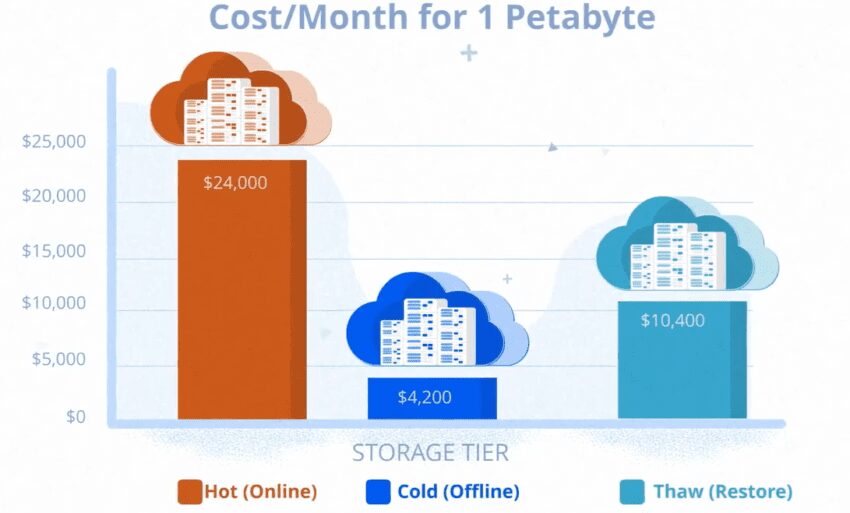Written by Andy James, Chief Product Officer
A quick search on the internet will yield many legitimate reasons to move to the cloud. Five of the most prominent are:
-
- Scalability
- Flexibility
- Updates
- Security
- Cost
The Intersection of Cloud and Seismic Data
Oil and gas companies are dealing with petabytes of seismic data. Typically, 85% of their total data is seismic, stored in different formats, both offline and online, across many locations.
How can the cloud help with subsurface data management? While all five factors I mentioned earlier are important, scalability and cost stand out above the others.
One of the cloud-storage options is object storage, which is designed to be highly scalable. It can handle massive libraries of data. Think about video content on Netflix or all the image content on Instagram!
Object storage is cheap too. When comparing retail costs for cloud object store, as noted in Table 1, you have a choice between hot or cold. For example, storing one petabyte of data in hot storage is more expensive compared to cold storage. The trade-off with cold storage is that you must thaw it before you can use it.
Table 1: Cloud Object Store Retail Cost Comparison

Note these numbers change frequently but can be found online using cloud vendor pricing calculators.
When placing data in object storage, a trade-off between the low cost of cold storage and the frequency of thawing needs to be made. It’s easy to look at the cost of archive and see why moving data to cloud archive is attractive.
Read the full blog published by The Open Group Open Subsurface Data Universe™ (OSDU) Forum.
